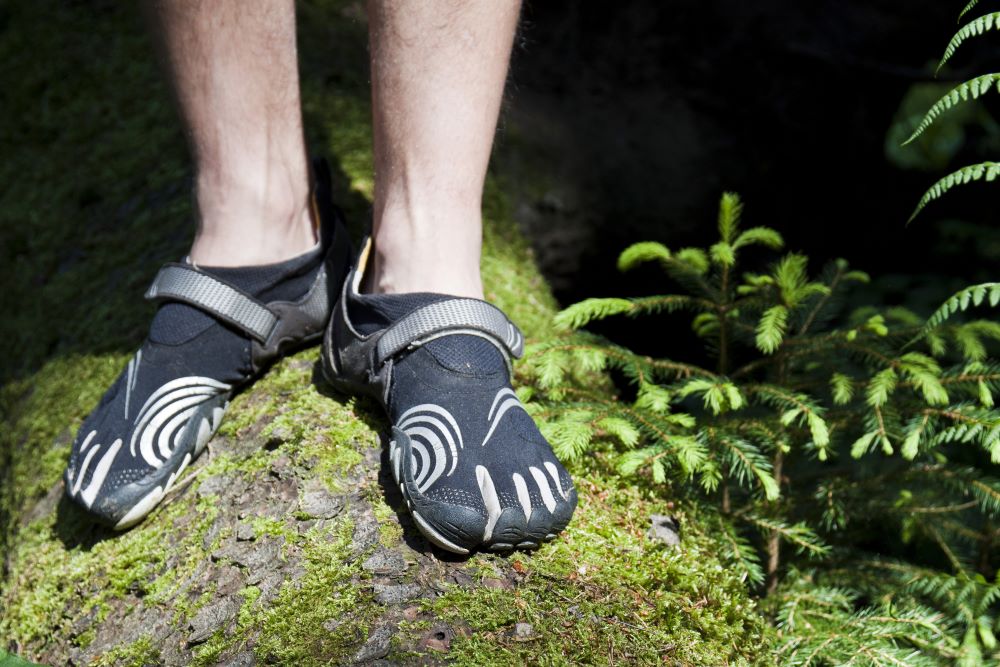Zero drop running shoes have been gaining popularity in recent years, but what exactly are they? In simple terms, zero drop running shoes have no difference in height between the heel and the toe. This means that when wearing them, the foot is parallel to the ground, creating a “zero drop.”
Traditional running shoes typically have a higher heel and less cushioning in the forefoot, which can encourage a heel-strike running style. Zero drop running shoes, on the other hand, are designed to promote a more natural running stride, encouraging a midfoot or forefoot strike. This can potentially reduce the risk of injuries and improve overall running performance.
While zero drop running shoes may not be suitable for everyone, they can be a great option for runners looking to improve their technique and reduce the risk of injuries. It’s important to note that transitioning to zero drop shoes should be done gradually to allow the body to adjust to the new running style.
Understanding Zero Drop Running Shoes
Zero drop running shoes are a type of footwear that has become increasingly popular among runners in recent years. They are designed to provide a more natural running experience, and have a number of benefits over traditional running shoes.
The term “zero drop” refers to the fact that there is no difference in height between the heel and the forefoot of the shoe. This means that when you wear zero drop running shoes, your foot is in a more natural position, with your heel and forefoot at the same level.
One of the main benefits of zero drop running shoes is that they encourage a more natural running style. When you wear traditional running shoes with a higher heel, your foot is in a position that is not natural, and this can lead to a variety of problems, including knee pain, shin splints, and other injuries.
Another benefit of zero drop running shoes is that they can help to improve your running form. When you wear these shoes, you are forced to land on your midfoot or forefoot, which can help to reduce the impact on your joints and improve your overall running efficiency.
Factors to Consider
When choosing zero drop running shoes, it is important to consider a number of factors, including the level of cushioning, the width of the shoe, and the type of terrain you will be running on. Some zero drop shoes are designed for road running, while others are better suited for trail running.
In summary, zero drop running shoes are a great option for runners who are looking for a more natural running experience. They can help to improve your running form, reduce the risk of injury, and provide a more comfortable and efficient running experience. When choosing zero drop running shoes, it is important to consider your individual needs and preferences to find the best shoe for you.
Benefits of Zero Drop Running Shoes
Zero drop running shoes have become increasingly popular among runners due to their many benefits. Here are some of the main benefits of wearing zero drop running shoes:
Natural Foot Positioning

One of the primary benefits of zero drop running shoes is that they promote a more natural foot positioning. Unlike traditional running shoes, which have a raised heel, zero drop shoes have a level sole that allows your foot to sit flat on the ground. This helps to encourage a more natural gait, which can lead to less strain on your feet, ankles, and knees.
Improved Running Form
Wearing zero drop running shoes can also help to improve your running form. Because they encourage a more natural foot positioning, they can help you to land on your midfoot or forefoot rather than your heel. This can lead to a more efficient stride and less impact on your joints. Additionally, zero drop shoes can help to strengthen the muscles in your feet and legs, which can also improve your overall running form.
Reduced Injury Risk
Another benefit of zero drop running shoes is that they can help to reduce your risk of injury. Traditional running shoes with a raised heel can encourage a heel-strike landing, which can put a lot of stress on your joints. By contrast, zero drop shoes encourage a midfoot or forefoot landing, which can help to reduce the impact on your joints and reduce your risk of injury.
Overall, zero drop running shoes can be a great choice for runners who are looking to improve their running form, reduce their risk of injury, and promote a more natural foot positioning. However, it’s important to note that they may not be the best choice for everyone, and it’s always important to speak with a healthcare professional before making any changes to your running routine.
Drawbacks of Zero Drop Running Shoes
While zero drop running shoes offer many benefits, they may not be suitable for everyone. This section will discuss some of the potential drawbacks of zero drop running shoes.
Adjustment Period
When transitioning from traditional running shoes to zero drop running shoes, an adjustment period may be necessary. This is because zero drop shoes require the runner to use different muscles in the feet and legs to maintain proper form.
During the adjustment period, it is common to experience muscle soreness and fatigue. It is important to gradually increase the amount of time spent wearing zero drop shoes to allow the body to adapt to the new running style.
Potential for Initial Discomfort
Some runners may experience initial discomfort when wearing zero drop running shoes. This is because zero drop shoes do not provide as much cushioning as traditional running shoes.
It is important to note that zero drop shoes are not designed for everyone. Runners with pre-existing foot or leg injuries may find that zero drop shoes exacerbate their condition. It is recommended to consult with a doctor or physical therapist before transitioning to zero drop shoes.
In conclusion, while zero drop running shoes offer many benefits, they may not be suitable for everyone. It is important to gradually transition to zero drop shoes and to listen to your body during the adjustment period. If you experience any discomfort or pain, it is recommended to consult with a medical professional.
Choosing the Right Zero Drop Running Shoes
When it comes to choosing the right zero drop running shoes, there are a few factors to consider. Here are some things to keep in mind:
Consider Your Running Style
Different zero drop running shoes are designed for different types of running styles. For example, some are better for long-distance running, while others are better for trail running. Consider what type of running you’ll be doing most often and look for shoes that are designed for that type of running.
Check the Shoe Fit
As with any running shoe, it’s important to make sure that the zero drop running shoes you choose fit properly. Look for shoes that fit snugly but not too tightly, and make sure that there is enough room in the toe box to allow your toes to move freely. It’s also important to choose shoes that provide enough support for your feet and ankles.
Think About Terrain
Consider the terrain you’ll be running on when choosing zero drop running shoes. If you’ll be running on trails, look for shoes with a more aggressive tread pattern and a more durable sole. If you’ll be running on pavement, look for shoes with a smoother sole that will provide better traction on hard surfaces.
When choosing zero drop running shoes, it’s important to take your time and do your research. Look for shoes that are designed for your running style, fit properly, and are appropriate for the terrain you’ll be running on. With the right shoes, you’ll be able to run comfortably and safely, whether you’re training for a race or just enjoying a leisurely jog.
Transitioning to Zero Drop Running Shoes
Transitioning to zero drop running shoes can be a great way to improve running form and reduce the risk of injury. However, it is important to make the transition gradually to avoid undue strain on muscles, ligaments, and tendons. Here are some tips to make the transition as smooth as possible.
Start Slow
The most important thing to keep in mind when transitioning to zero drop running shoes is to start slow. Give your body time to adjust to the new shoes by gradually increasing the amount of time you spend in them. This could mean starting with just a few minutes of running in the zero drop shoes and gradually increasing the time each week.
It is also a good idea to alternate between your old shoes and the zero drop shoes during the transition period. This will give your body time to adapt to the new shoes without putting too much stress on your muscles and joints.
Listen to Your Body
As you make the transition to zero drop running shoes, it is important to listen to your body. If you experience pain or discomfort, it may be a sign that you are pushing yourself too hard. Take a break and give your body time to recover before continuing with your training.
It is also important to pay attention to your running form. Zero drop shoes encourage a more natural running style, but it can take time to adjust to this new form. Focus on landing on the midfoot or forefoot and keeping your posture upright.
By following these tips, you can make the transition to zero drop running shoes safely and effectively. Remember to start slow, listen to your body, and give yourself time to adjust to the new shoes.


